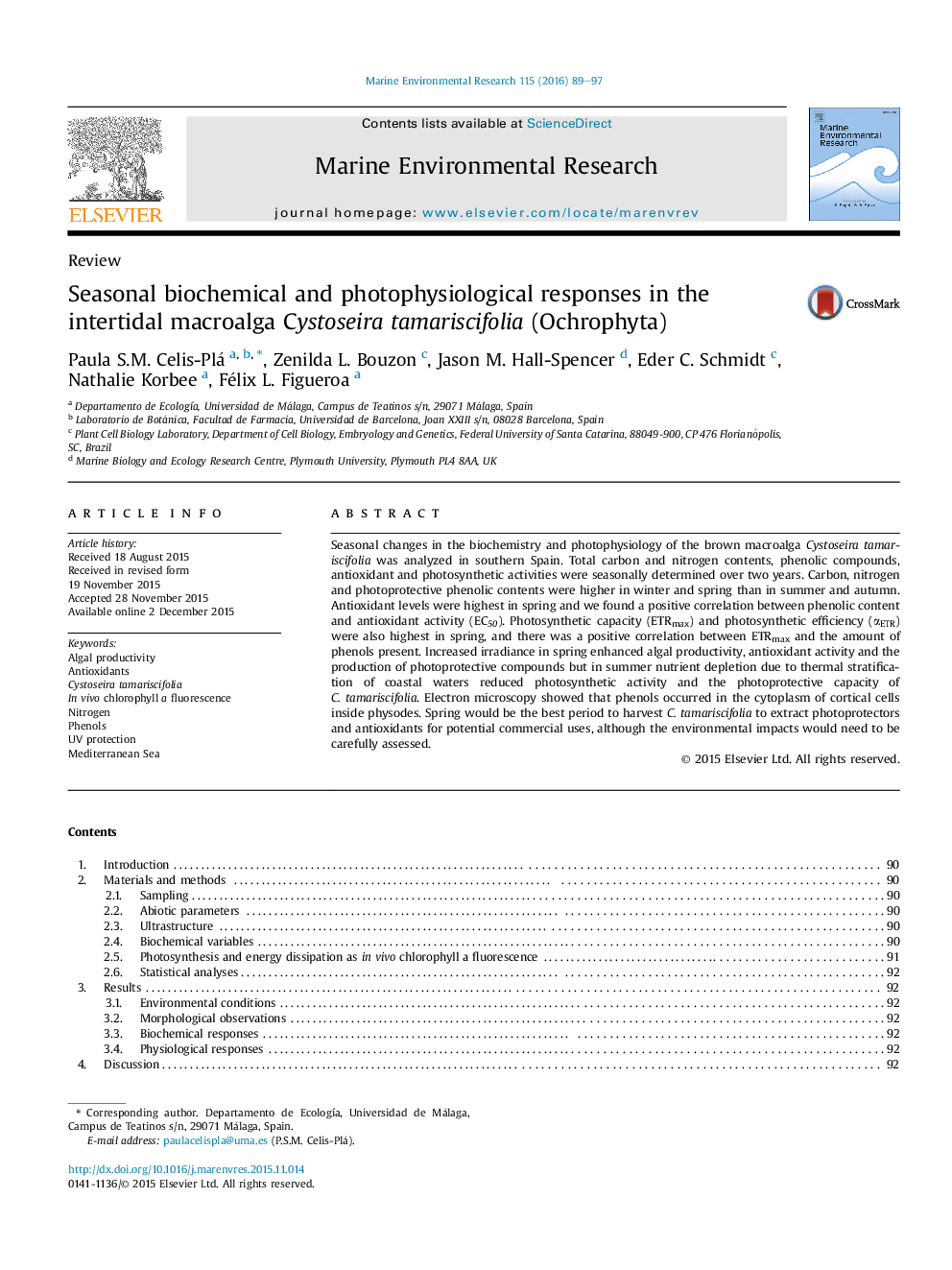| Article ID | Journal | Published Year | Pages | File Type |
|---|---|---|---|---|
| 6387627 | Marine Environmental Research | 2016 | 9 Pages |
â¢Monitoring of seasonal changes in biochemistry and photophysiology of Cystoseira tamariscifolia.â¢The increased irradiance in spring enhanced the algal productivity.â¢The best period to harvest C. tamariscifolia to commercial uses could be in spring.
Seasonal changes in the biochemistry and photophysiology of the brown macroalga Cystoseira tamariscifolia was analyzed in southern Spain. Total carbon and nitrogen contents, phenolic compounds, antioxidant and photosynthetic activities were seasonally determined over two years. Carbon, nitrogen and photoprotective phenolic contents were higher in winter and spring than in summer and autumn. Antioxidant levels were highest in spring and we found a positive correlation between phenolic content and antioxidant activity (EC50). Photosynthetic capacity (ETRmax) and photosynthetic efficiency (αETR) were also highest in spring, and there was a positive correlation between ETRmax and the amount of phenols present. Increased irradiance in spring enhanced algal productivity, antioxidant activity and the production of photoprotective compounds but in summer nutrient depletion due to thermal stratification of coastal waters reduced photosynthetic activity and the photoprotective capacity of C. tamariscifolia. Electron microscopy showed that phenols occurred in the cytoplasm of cortical cells inside physodes. Spring would be the best period to harvest C. tamariscifolia to extract photoprotectors and antioxidants for potential commercial uses, although the environmental impacts would need to be carefully assessed.
